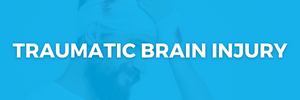Accidents can happen unexpectedly, but being prepared and knowing what to do can make a significant difference in minimizing construction injuries and damages.
In this blog, we will discuss the importance of construction accident prevention, responsibilities of various parties, and practical steps to take during an accident.
Importance of Accident Prevention in the Workplace
Accident prevention is incredibly important in the workplace for several key reasons. Let’s explore them:
- Preserving Lives: The primary reason for accident prevention is to protect and save lives. By implementing safety precautions and measures, employers can reduce accidents from falling objects, injuries, illnesses, and even fatalities among their employees. By doing this, everyone may return home in safety at the end of the day.
- Physical Well-being: Workplace accidents can lead to severe physical injuries that have long-term effects on individuals. Accident prevention aims to create a workspace that prioritizes physical well-being by reducing hazards, promoting safe practices, and providing appropriate protective equipment.
- Mental and Emotional Well-being: Workplace accidents not only cause physical harm but also take a toll on mental and emotional well-being. By emphasizing accident prevention, employers create a positive work environment where employees feel safe, supported, and valued.
- Financial Consequences: Workplace accidents have significant financial implications for both employees and employers. Injured construction workers in a construction accident case may require medical treatment, rehabilitation caused by pain and suffering and time off work, resulting in lost wages.
Employers face increased insurance costs, legal expenses, productivity losses, and damage to their reputation. Preventing accidents helps reduce the financial burden associated with workplace incidents, benefiting both employees and employers.
- Legal Compliance: Employers have a legal and moral responsibility to provide a safe workplace. Failing to meet these obligations can lead to fines, penalties, and lawsuits.
By actively implementing construction accident law prevention measures, employers demonstrate their commitment to meeting legal requirements and ensuring the well-being of their workforce.
Purpose of Accident Inspection Investigation at a Construction Site
The purpose of accident inspection investigation at a construction site is to:
- Identify why the accident happened to prevent similar incidents in the future.
- Gather evidence for legal purposes, such as determining liability and insurance claims.
- Improve safety practices by identifying areas for enhancement.
- Foster a safety-conscious culture that emphasizes learning from mistakes.
- Ensure adherence to safety laws and uphold a secure workplace.
By conducting these investigations, construction sites can learn from accidents, prevent future incidents, and create a safer workplace for everyone involved.
Common Incidents in a Construction Site
Common incidents in a construction site can vary depending on the nature of the construction project and the specific hazards present. However, some of the most common incidents in construction sites include:
- Falls: Falls from heights, such as scaffolds, ladders, or rooftops, are one of the most prevalent accidents in construction sites.
- Struck by Objects: Being struck by falling or flying objects, such as tools, building materials, or equipment, is another common incident.
- Electrical Accidents: Contact with live wires, faulty equipment, or unsafe electrical practices can lead to electrical shocks or electrocution.
- Caught-In or Between Objects: Workers can get caught in or between heavy machinery, equipment, or collapsing structures, causing injuries or fatalities.
- Machinery Accidents: Accidents involving heavy machinery, such as cranes, bulldozers, or forklifts, can occur due to operator error, equipment failure, or inadequate training.
- Structural Collapses: Partial or complete collapses of structures, including buildings, scaffolding, or trenches, can lead to serious injuries or fatalities.
- Overexertion and Musculoskeletal Injuries: Repetitive motions, heavy lifting, and improper ergonomics can result in muscle strains, sprains, or other musculoskeletal injuries.
- Chemical and Hazardous Material Exposure: Exposure to hazardous substances, such as toxic chemicals, asbestos, or silica dust, can cause respiratory problems, skin irritation, or long-term health issues.
- Fires and Explosions: Accidental fires or explosions can occur due to faulty electrical systems, improper storage of flammable materials, or mishandling of combustible substances.
- Slip, Trips, and Falls: Slippery surfaces, cluttered walkways, or inadequate lighting can lead to slips, trips, and falls, resulting in various injuries.
Preventing Accidents: Effective Strategies
To prevent accidents at a construction site:
- Follow safety protocols and guidelines.
- Conduct regular safety inspections.
- Report hazards promptly.
- Participate in safety training programs.
- Maintain equipment and machinery.
- Manage fatigue and mental alertness.
- Ensure effective communication.
- Promote a safety culture.
- Regularly review and update safety policies.
- Learn from near misses and incidents.
By implementing these measures, you can create a safer construction site environment and reduce the risk of accidents.
Employer Responsibilities to Construction Workers
Employers have several important responsibilities to ensure the safety and well-being of their construction workers. These responsibilities include:
- Providing a Safe Work Environment: Employers must create and maintain a safe work environment that minimizes the risk of accidents and hazards.
- Conducting Risk Assessments: Employers are responsible for identifying and assessing workplace hazards through regular risk assessments.
- Offering Adequate Training and Instruction: Employers must provide comprehensive training and instruction to employees to ensure they have the necessary knowledge and skills to perform their work safely. This includes training on safety procedures, equipment operation, hazard recognition, emergency response, and any specific training relevant to the tasks they will be performing.
- Supplying Personal Protective Equipment (PPE): Employers should provide and maintain appropriate personal protective equipment (PPE) for workers.
- Ensuring Compliance with Regulations: Employers have a legal obligation to comply with relevant safety and health regulations and standards. Employers must keep up-to-date with any changes in regulations and implement necessary measures to ensure compliance.
- Establishing Safety Policies and Procedures: Employers should develop and communicate clear safety policies and procedures to all employees. These policies outline expectations for safe work practices, hazard reporting, incident reporting, and emergency procedures.
- Promoting Safety Culture: Employers are responsible for fostering a culture of safety within the organization. This involves promoting a positive attitude towards safety, encouraging open communication about safety concerns, recognizing and rewarding safe practices, and involving workers in safety committees or programs.
- Providing Supervision and Oversight: Employers should provide adequate supervision and oversight to ensure that work is carried out safely.
- Conducting Incident Investigations: In the event of an accident or incident, employers are responsible for conducting thorough investigations to determine the root causes.
- Supporting Employee Involvement: Employers should encourage and support employee involvement in safety-related matters. This includes actively seeking input and suggestions from workers, involving them in safety committees or meetings, and providing avenues for reporting safety concerns without fear of reprisal.
Responsibility for On-Site Safety
On-site safety is a shared responsibility among employers, employees, supervisors, contractors, visitors, and regulatory authorities. Here’s a simplified breakdown of their responsibilities:
- Employers: Provide a safe work environment, implement safety policies, conduct risk assessments, offer training and supervision, and ensure compliance with safety regulations.
- Employees: Follow safety protocols, use personal protective equipment, report hazards, and participate in safety training.
- Supervisors: Provide leadership, monitor compliance, address safety concerns, and conduct safety inspections.
- General Contractors: Comply with safety regulations, follow site-specific rules, provide competent workers, and communicate with stakeholders.
- Visitors: Follow safety protocols, wear required personal protective equipment, and be aware of surroundings.
- Regulatory Authorities: Develop and enforce safety regulations, conduct inspections, and ensure compliance.
By fulfilling these responsibilities, all stakeholders contribute to maintaining on-site safety and creating a secure work environment.
Actions to Take When an Accident Happens on the Construction Site
When an accident happens on a construction site, take the following steps:
- Ensure safety: Prioritize the safety of everyone involved, removing them from immediate danger and providing first aid or medical assistance if needed.
- Notify authorities: Inform the relevant individuals or authorities, such as site supervisors or safety officers, to coordinate further actions.
- Secure the scene: Take measures to secure the accident site, preserving it for investigation and preventing further accidents.
- Document the accident: Gather information and document the incident, including details, photographs, and witness statements, to aid in investigations and reporting.
- Report the accident: Follow established reporting procedures within your organization to ensure proper documentation and address any necessary actions.
- Conduct an investigation: Thoroughly investigate the accident to determine its causes and contributing factors, using qualified personnel and collecting relevant evidence to present to the construction accident attorneys.
- Review and improve safety measures: Based on the investigation findings, review existing safety measures and implement corrective actions to prevent similar accidents in the future.
Responsibility for Accidents
Determining responsibility for accidents can be a complex matter that often requires a thorough investigation to identify the contributing factors and individuals involved. Here are some key points to consider regarding responsibility for accidents:
- Multiple Factors: Accidents can be caused by a combination of factors, including human error, equipment failure, environmental conditions, or inadequate safety measures.
- Employer Responsibility: Employers have a legal and moral responsibility to provide a safe work environment, implement safety policies and procedures, and ensure that employees receive proper training and supervision.
- Employee Responsibility: Employees also have a responsibility to follow safety protocols, use personal protective equipment correctly, and work in a manner that promotes their own safety and the safety of others.
- Contractor Responsibility: Contractors and subcontractors have a duty to comply with safety regulations, follow site-specific safety rules, and ensure the safety of their workers. If a contractor’s negligence or failure to meet safety standards contributes to an accident, they may be held responsible.
- Shared Responsibility: In many cases, responsibility for an accident is shared among multiple parties. This may include the employer, employees, supervisors, contractors, or even equipment manufacturers. Each party’s level of responsibility depends on their actions, negligence, or failure to fulfill their duties.
- Legal Considerations: Determining liability for accidents may involve legal considerations. Insurance companies, regulatory authorities, and legal professionals may be involved in assessing responsibility and determining any potential legal consequences.
Liability for Damages Caused by Accidents at the Site
Liability for damages caused by accidents at the construction site can vary depending on the circumstances and legal jurisdiction. However, here are some key points to consider:
- Employer Liability: Employers may be held liable for damages caused by accidents if they are found to have been negligent in providing a safe work environment, implementing proper safety measures, or failing to meet their legal obligations.
- Contractor Liability: Contractors and subcontractors may also be held liable for damages if their actions or negligence contributed to the accident. This could include situations where contractors have not followed safety regulations, failed to properly train their workers, or provided faulty equipment or materials
- Third-Party Liability: In some cases, liability for damages may extend to third parties such as equipment manufacturers or suppliers if their products were defective or contributed to the accident. Legal principles such as product liability may come into play in such situations.
- Workers’ Compensation: In many jurisdictions, workers’ compensation laws provide a system for compensating workers for work-related injuries or illnesses. Under workers’ compensation, the responsibility for paying damages is typically shifted to the employer’s insurance provider, regardless of fault.
- Legal Proceedings: Determining liability and seeking compensation for damages caused by accidents often involves legal proceedings. This may include filing a lawsuit, injury claims, insurance claims, or negotiating settlements. Legal advice from professionals experienced in personal injury attorney or construction law is crucial in navigating these processes for injured worker.
It is important to consult with legal professionals familiar with the specific laws and regulations in your jurisdiction to understand the liability framework and legal recourse available in case of construction accident injuries causing damages at the construction site.
Worker Responsibilities
- Follow Safety Procedures: Workers must adhere to safety protocols and guidelines, including using personal protective equipment and following safe practices.
- Report Hazards: Workers should promptly report any observed hazards or unsafe conditions.
- Use Equipment Safely: Workers must use tools, equipment, and machinery correctly and report any malfunctions or defects.
- Participate in Safety Training: Workers should actively engage in safety training programs to stay informed and knowledgeable.
- Take Responsibility for Personal Safety: Workers have a personal responsibility to prioritize their safety and follow established rules.
- Communicate Safety Concerns: Workers should share safety concerns and suggestions with supervisors or safety officers.
- Support a Safety Culture: Workers should promote safe practices and contribute to a culture of safety.
- Follow Emergency Procedures: Workers should be familiar with emergency procedures and evacuation plans.
By fulfilling these responsibilities, workers contribute to a safe work environment and accident prevention.
Role of lawyer in Construction Site Accident
The role of a construction accident lawyer houston in a construction site accident is to provide legal representation and guidance to individuals or parties involved in the accident.
- Legal Advice: construction accident law firm lawyers provide guidance on the rights and responsibilities of those involved in the accident, helping them navigate the legal system.
- Investigation: Lawyers gather evidence and interview witnesses to determine liability and strengthen the case.
- Liability Assessment: Lawyers analyze evidence and laws to determine who may be held responsible for the accident.
- Claims and Lawsuits: Lawyers assist in filing claims or lawsuits forworkers compensation benefits, handling all legal procedures and negotiations.
- Negotiation and Settlement: Lawyers negotiate fair settlements with insurance companies or opposing parties, protecting their clients’ interests.
- Litigation Representation: Lawyers present the case in court, advocating for their clients and pursuing favorable outcomes.
- Legal Compliance: Lawyers ensure compliance with legal requirements and regulations throughout the process, it can be noted with their testimonials.
- Legal Support and Guidance: Lawyers provide emotional support, explain options and risks, and help clients make informed decisions.
The role of a lawyer in a construction site accident is to protect clients’ rights, workers compensation claims , and pursue legal remedies. You can check directly on the case result they handled.
In conclusion, construction site accidents can have severe consequences, but with proper awareness and preparedness, we can minimize their occurrence and mitigate their impact.
Understanding the importance of accident prevention, fulfilling our responsibilities, and taking prompt actions during accidents helps create safer working environments for all.
Remember, safety should always be a top priority. Stay vigilant, stay informed, and stay safe!





